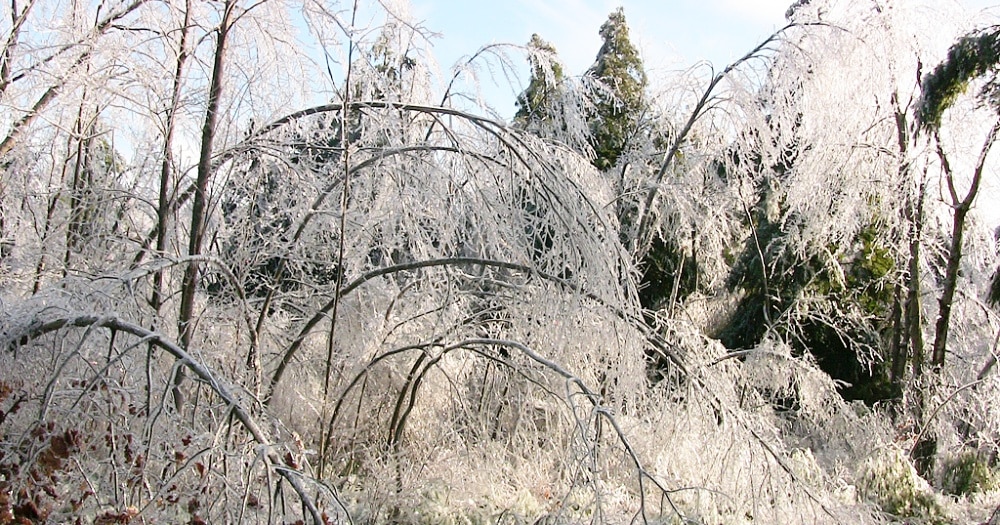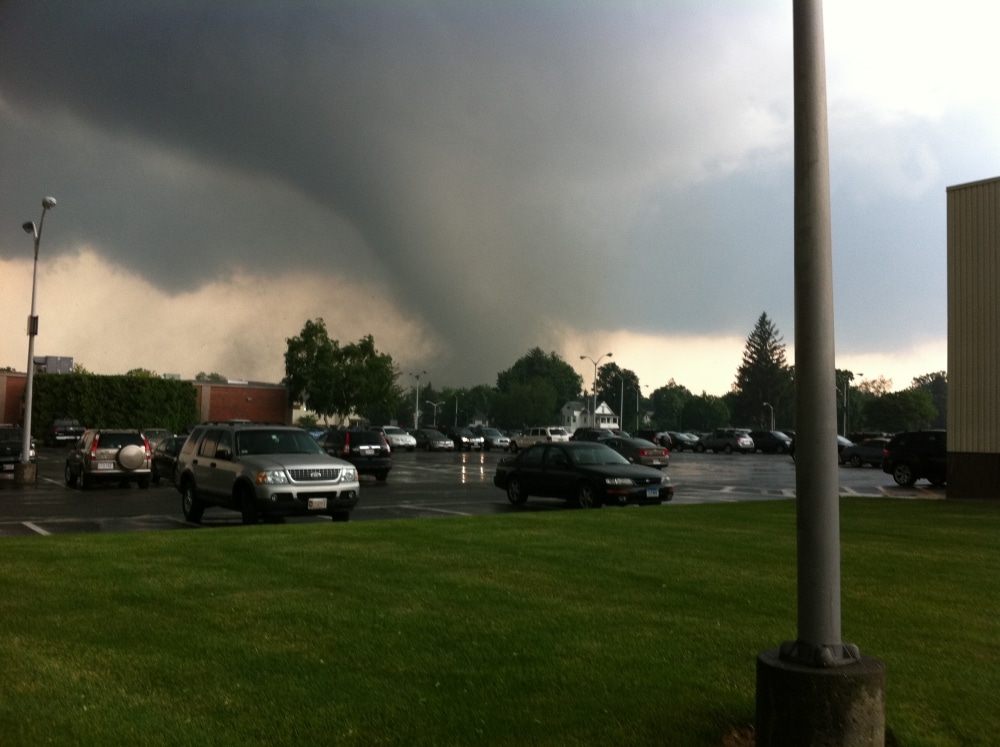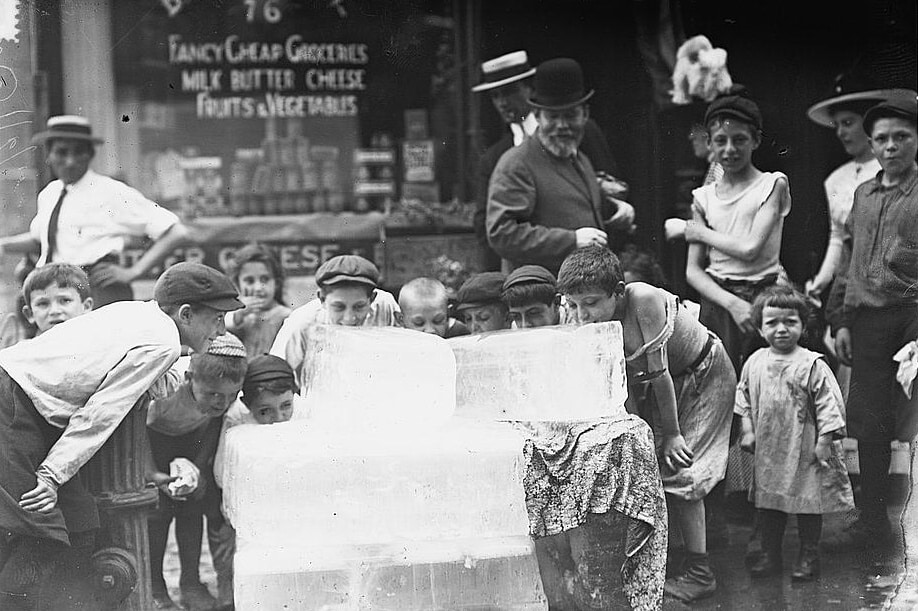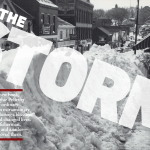6 Strange Weather Events in New England History
From ice storms and tornadoes to the summer that wasn’t, here’s a look back at the region’s notable strange weather events.

Coffee By Design | Portland, Maine
Photo Credit : Katherine KeenanHere in New England, we know a thing or two about unpredictable weather. It takes a lot to truly surprise us, but it does happen now and then. Here are some of the weirdest strange weather events we’ve had.
6 Strange Weather Events in New England History
“The Dark Day” of 1780
On May 19, 1780, many a pious New Englander was convinced that judgment day was nigh. What else could they think, when after several days of the sun appearing to be red, they saw a sunrise quickly followed by a return to darkness? It is said that the day was so dark, candles were required at noon, and peepers and other nighttime critters could be heard throughout the day. The dark lasted until around midnight, when the stars finally appeared.
The cause of this blackout was likely a combination of smoke from Canadian forest fires and a low, heavy fog. Indeed, there were reports of up to six inches of ash falling on parts of New Hampshire.
The Connecticut legislature was in session on the day the skies darkened, and when cries went out for emergency adjournment, one of its members showed he understood how to grab a moment. “The day of judgment is either approaching, or it is not,” Abraham Davenport said. “If it is not, there is no cause of an adjournment; if it is, I choose to be found doing my duty.”

Photo Credit : Matt Putzel/Wikimedia Commons
Tornado Outbreak of 2011
Strange weather incidents like tornadoes are rare in New England, but on June 1, 2011, at least seven formed in the Connecticut River Valley and caused extensive damage to Springfield, Massachusetts, and the surrounding area. Three people were killed in Springfield, at least 200 were injured, and hundreds more were left homeless.
In the run-up to the tornadoes, there were other weird weather events: nasty hailstorms in Maine, Massachusetts, and New Hampshire and a monster hailstorm in Vermont (with three-inch hailstones reported in Shaftsbury). Then the first confirmed tornado touched down near Springfield. Others were reported in Bethel and Embden, Maine, as well as in the Massachusetts towns of Westfield, Charlton, Wilbraham, Brimfield, and Fiskdale.
The Springfield tornado was large and powerful, with winds reaching 160 mph. It remained on the ground for more than an hour, leaving a 39-mile path of devastation that was as much as half a mile wide. Hundreds of homes were destroyed, with damage estimates exceeding $140 million.
[text_ad]
Cold Summer of 1816
It sounds like one of those stories your dad used to tell — you know, about how he walked to and from school, uphill, both ways, and it snowed every day. The year 1816 might not have been the stuff of fatherly legend, exactly, but it does rank high among New England’s strange weather events. There was a snowstorm in June and a hard frost at least once each month that year. While it wasn’t consistently cold that summer, every time it seemed as though things were starting to warm up, the temperatures would plunge again. Then, on June 6, six inches of snow fell on New England (and a whopping 18 inches fell in Cabot, Vermont). There were flurries in Boston on June 7. Crops were destroyed and birds froze to death.
Temperatures continued to fluctuate throughout the summer, with just enough heat to get things growing again before the next frost would wipe them out. It snowed in Vermont on August 20, and a week later a hard frost hit Maine and New Hampshire. The multitude of crop failures caused prices to skyrocket.
Although there was much speculation about the cause of these strange weather events at the time, it now seems likely that the massive 1815 volcanic eruption of Mount Tambora in Indonesia — which introduced many tons of ash into the atmosphere — was the culprit.
New England Drought of 1965
Although regional drought reached an apex in 1965, it was actually part of a near-decade-long dry spell that ran from 1961 to 1969. From 1962 to 1966, all but 12 months had below-average precipitation. Water became scarce, reducing the drinking water supply and imperiling crops and livestock. Wells, ponds, and reservoirs dried up. The fire danger level escalated.
In 1965, much of New England registered the driest year on record. With supplies already stressed, communities across the region found themselves in the midst of full-on water emergencies. Pretty much any discretionary use of water was banned. Before summer was over, 11 Massachusetts counties had been declared drought-related-disaster areas.
Some relief arrived in the form of September rains, but frigid temperatures followed soon after and kept much of the moisture above ground and out of the water table. By November, the Quabbin Reservoir had been reduced to 59 percent of its optimal capacity.
Lasting relief would not come until 1967, when snowmelt and spring rains finally quenched the thirst.

Photo Credit : mcready/Flickr/Creative Commons
Northern New England Ice Storms of 1998 and 2008
Between January 5 and January 9, 1998, an ice storm devastated much of northern New England, along with northern New York and southeast Canada. Total storm damage was estimated at more than $3 billion. More than three inches of ice accumulated in some places, and all that weight brought down trees and power lines.
Millions of trees were damaged in this strange weather incident, disrupting maple sugaring as well as apple crops for years that followed. More than 220,000 residents in Maine were without power in what officials acknowledged was the largest outage they’d ever seen. “A once-in-a-lifetime storm,” they said.
Not quite.
In December 2008, a powerful ice storm took an almost direct hit on most of New England. More than one and a half million people in seven states, from Pennsylvania to Maine lost power, and in some areas (including near our Yankee offices) it took weeks to be restored.
Dozens of shelters were set up for those driven from their cold homes, and the National Guard was called in to help remove downed trees and other debris. At least four deaths were attributed to the storm, two of those in New England.

Photo Credit : Bain Collection (Library of Congress)
Heat Wave of 1911
New England has seen plenty of strange weather events over the years, but the deadliest in the region’s history was the heat wave of 1911. As if triggered by the turning of the calendar page, temperatures on July 1 peaked near 90 degrees. They climbed higher the next day, hovering around 100. On Monday, July 3, Boston set a new all-time high with a reading of 106º Fahrenheit. But it wasn’t a record that would stand for long, as July 4 was hotter still. A bit of relief arrived on July 6, although with the temperature shift came violent storms. But once the storms moved out, temperatures returned to triple digits on the July 10 and 11. For most of the Northeast, there was no reprieve throughout the first half of July. Even the White Mountains experienced temperatures in the high 90s.
The previous year in Massachusetts, a few dozen people died of heat-related causes in July. In the crazy heat wave of 1911, that number spiked to more than 1,100.
What weird or strange weather events would you add to this list?
This post was first published in 2018 and has been updated.








How about the October Nor’easter of 2011? Thirteen inches of heavy wet snow in fell in Southern New England on the 29th causing many power outages from snow-covered trees. Roughly 1 million customers lost power in Connecticut alone, many for weeks. Property damage was widespread. Halloween was canceled in many communities due to safety issues (no streetlights, damaged power lines, etc). Personally, I lost six trees. It forever changed the streetscapes of many towns as CL&P cut hundreds of trees near power lines to prevent future catastrophic failures of the power grid from falling branches and trees. I will never forget Winter Storm “Alfred”. It was a doozie.
I was out of power over a week no water because I had a well it was terrible.
The June 9th, 1953 Worcester, MA tornado where 100+ people were killed! I was outside, right in the midst of it, but I don’t remember a thing about that entire day… until ‘coming to’ at Hahneman Hospital five hours later (concussion.) Now, at 84, my only residual effects are complete hearing loss on the side of my head where I was struck. I’m most grateful for my spared life!
here in SW Mass. is it just me, or has there been an unusually large amount of precipitation in the last 7-8 months? i’ve been trying to find data on this for Fall 2018 / winter 2019
These are weather changes much dependent on volcanoes, ocean currents etc, not global warming or cooling hysteria…
The ice storm 2008 was the straw that broke the camel’s back for me. Took two years but 2010 we left Massachusetts and moved to sunny,moderate weather NEW MEXICO. I DO MISS NEW ENGLAND but I am happy here and Not Living in a harsh snow belt. Love love your magazine .Maureen Moyen
The 1968 snowstorm was the worst. Couldn’t get out of my street for a week. We lived next to the Warwick Airport, R.l. We actually had food stamps. No electricity. We were a disaster area. Even my parents in England heard about it on the news. So many people were isolated from their homes.
How about Superstorm Sandy…and also the ice storm of 1973?